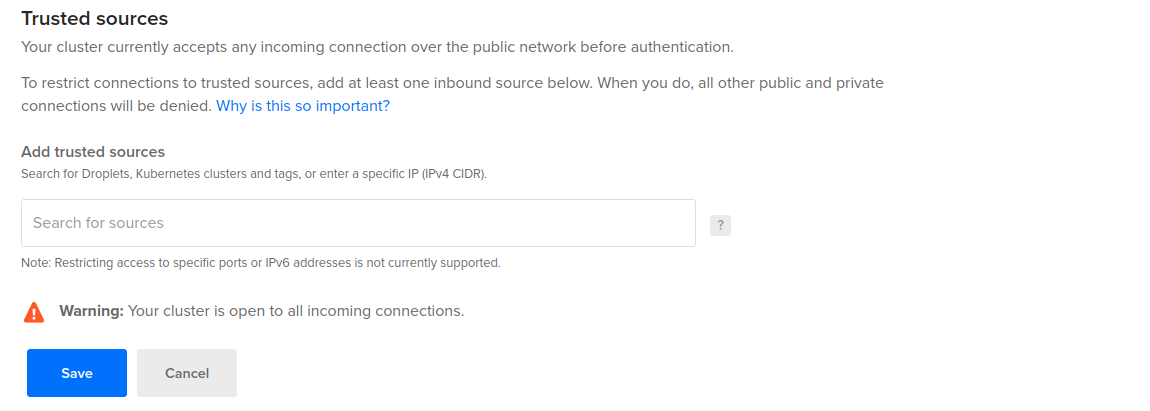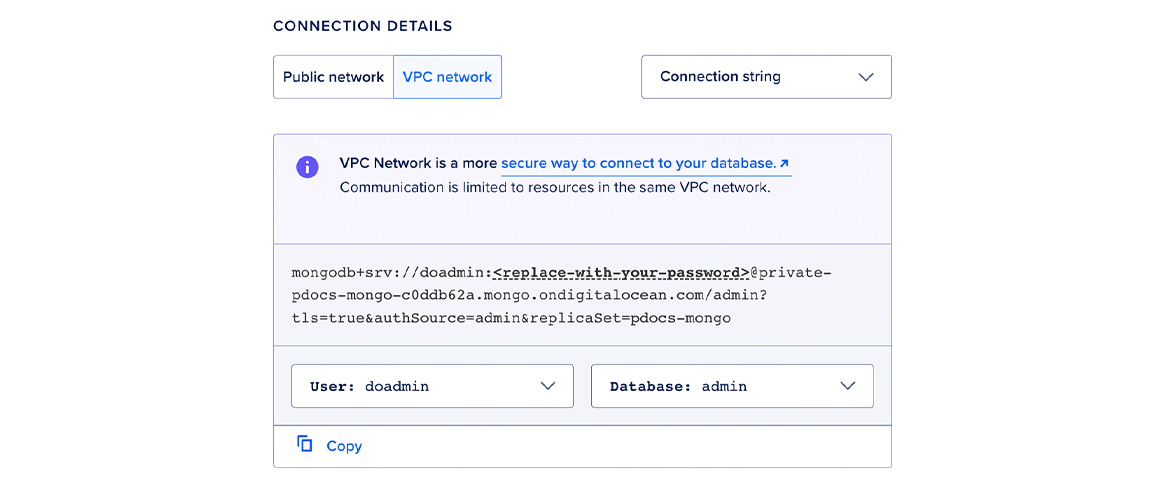Best Practices
Redis is an open source, key-value database built with an in-memory design that emphasizes speed. It has support for rich data types, atomic operations, and Lua scripting.
Use VPCs
We recommend you make full use of your DigitalOcean VPC networks to improve security, facilitate connection management, and mitigate trusted source limits. To do this, add the CIDR address of a database’s VPC network to its trusted sources. This functionally adds all other resources you have in the same VPC network to the database’s trusted sources using only one address towards the limit, as long as they connect via the private connection string, instead of the public one. The CIDR address also only counts as one trusted source IP against the 100-IP limit.
First, go to the control panel and click on your database. In its Overview tab, find the VPC Network section, which details the VPC’s name (such as default-nyc3) and its address (such as 10.108.0.0/20). Copy the VPC’s address without its netmask to your clipboard. For example, instead of copying 10.108.0.0/20, copy 10.108.0.0.

Then, click the Settings tab. Find the Trusted Sources section and click Edit to the right of it. Paste the VPC’s address without the netmask and press Enter. Click Save to confirm your change.

Now, all other resources in that same VPC network can connect to the database by using the private connection string, instead of the public one. You can find the private connection string in the database’s Overview tab. Under Connection Details select VPC Network, then click on the dropdown menu reading Connection Parameters and select Connection String.

For improved security, we recommend you use this private connection string whenever possible and minimize the number of public connections to the database.
To establish secure, centralized connections between resources in different VPCs or platforms, you can use a proxy server, for example Redis Cluster Proxy or HAProxy.